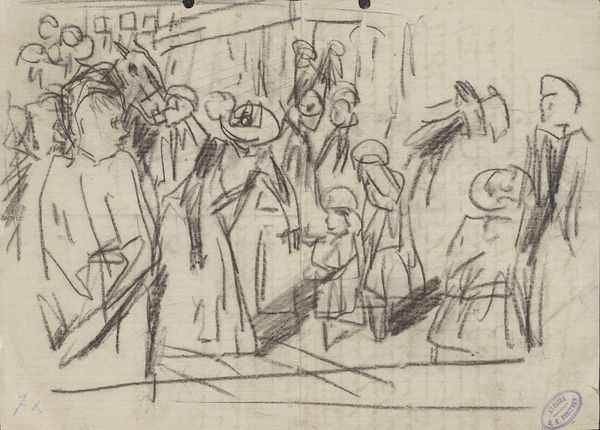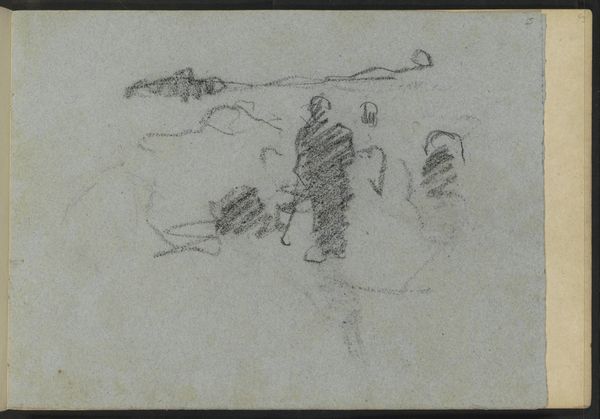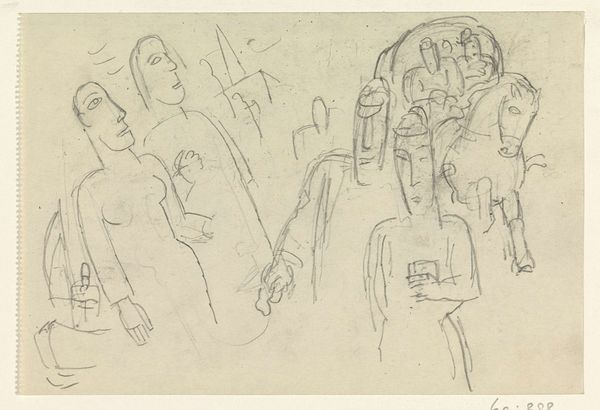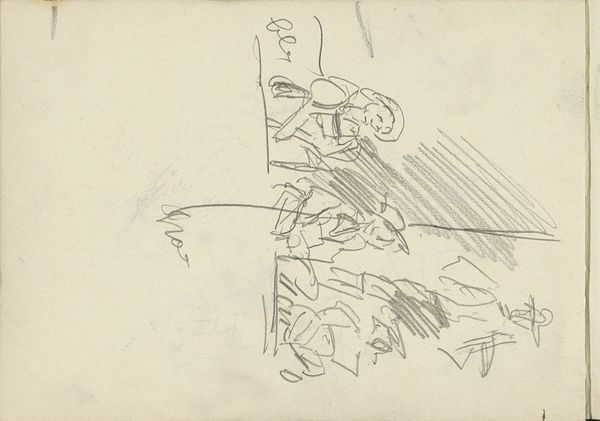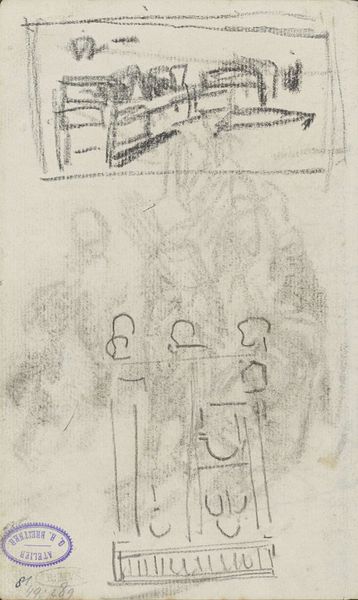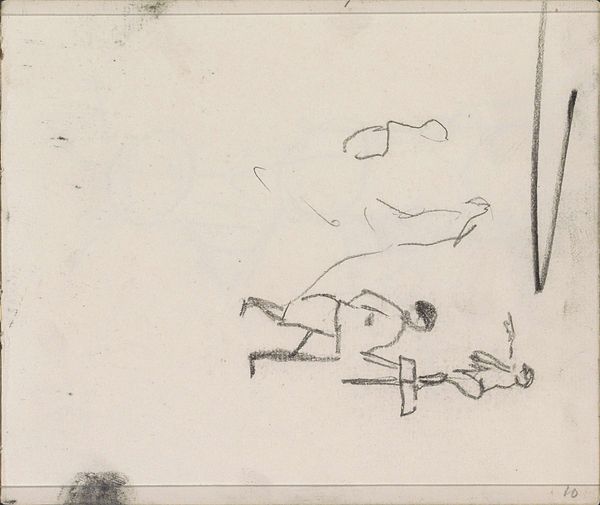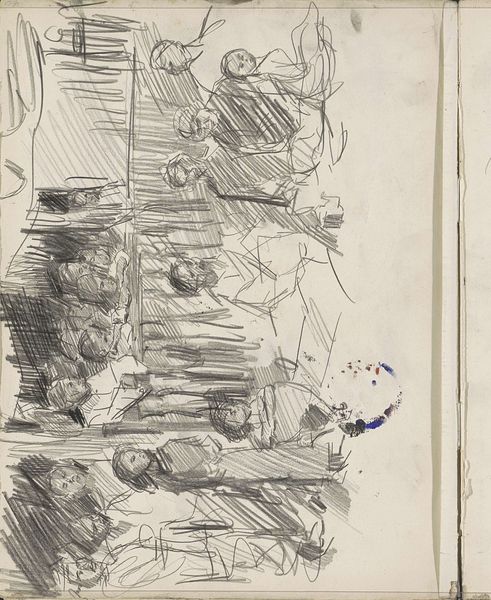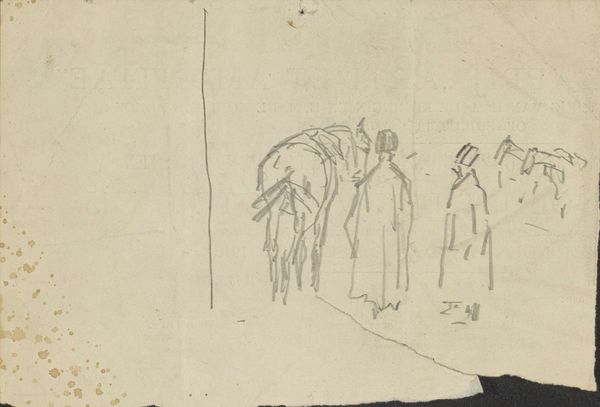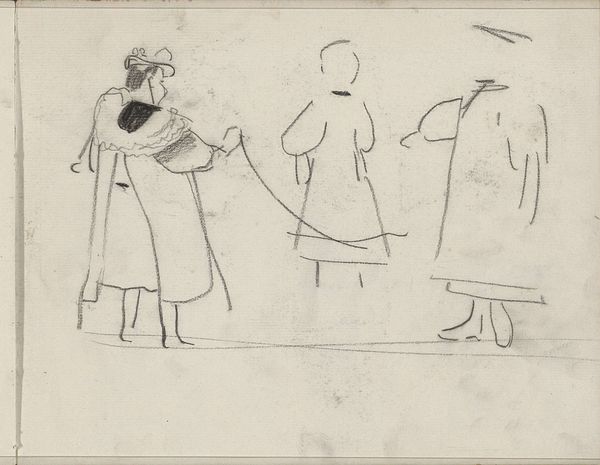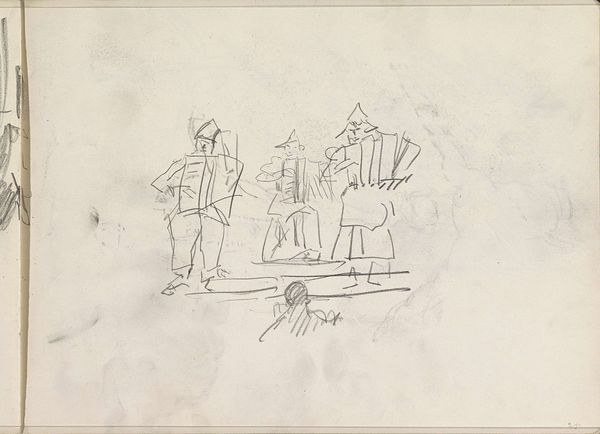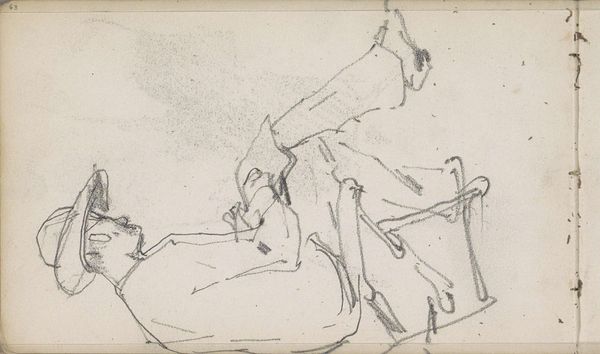
Dimensions: height 130 mm, width 193 mm
Copyright: Rijks Museum: Open Domain
Editor: So this pencil drawing, "Vrouwen en kinderen" or "Women and Children", is by George Hendrik Breitner, dating sometime between 1886 and 1923. It strikes me as a fleeting glimpse into a moment of everyday life, sketched with such rapid energy. What catches your eye about this piece? Curator: What fascinates me is how Breitner uses the Impressionistic style to capture not just the figures, but a sense of social change happening during this period. Consider how the rise of industrialization impacted family structures. Do you think this drawing reflects a commentary on traditional roles versus new emerging societal norms? Editor: I hadn't thought of it that way. I was focused on the art style itself, but I guess seeing women and children depicted could mean that he's emphasizing how crucial families are amid all that societal flux, right? Almost like they’re little islands in a changing world? Curator: Exactly. Breitner often captured ordinary people in urban environments, making him something of a visual chronicler of his time. By placing "genre-painting" at the very heart of fine art, his artwork made this group a theme, visible to a public audience, marking their space in a world that changed rapidly. It reflects the democratization of art, representing a shift away from idealized depictions towards more realistic, accessible imagery. Editor: That makes so much sense! Now I see how a seemingly simple drawing captures such big societal themes. Thanks for shedding light on that. Curator: It shows how a simple visual snapshot can say much about our shared experiences! Editor: Definitely. This gives me a new appreciation for how social factors mold art creation, which I find very interesting.
Comments
No comments
Be the first to comment and join the conversation on the ultimate creative platform.
